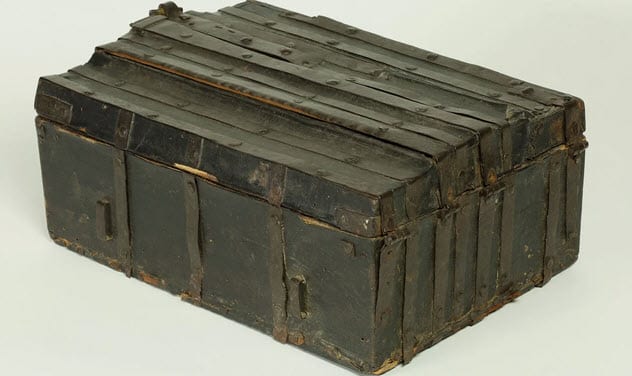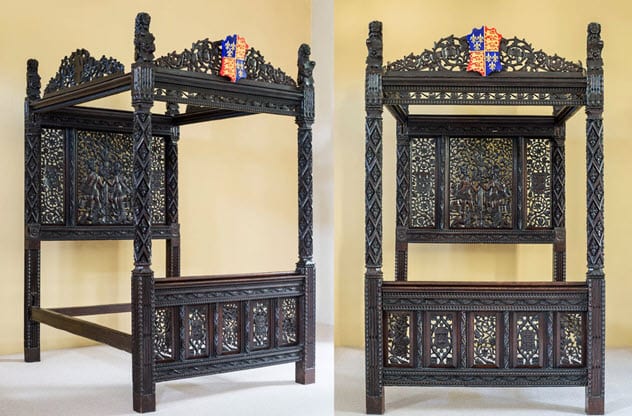2 Traveling Book Coffer

Today, book lovers may carry a library with them everywhere they go. Travelers frequently utilized a book coffer since readers in the Middle Ages did not have the convenience of.pdf files. There are now just 100 of these rare relics left.
One was purchased by Oxford’s Bodleian Libraries in 2019 from a private buyer. The case originated in France and was made of leather and wood in the fourteenth century. Additionally, it had carrying straps and metal clasps.
In two ways, the box was extraordinarily valuable. This is one of the earliest book coffers ever discovered; the majority of surviving examples originate from the 1500s. A woodcut that was fastened to the interior of the lid was the most intriguing discovery. It was a composition titled “God the Father in Majesty,” a draft taken from a Parisian liturgy book.
The print may have served to shield the contents of the coffer spiritually, according to the Bodleian. The woodcut was quite uncommon all around. Only four of its kind are known to survive, and it was discovered in its original environment and dates to Europe’s early printing attempts.
1 Royal Marriage Bed

A bed was purchased online by an antiques dealer almost ten years ago. The description of a “profusely carved Victorian four-poster bed with armorial shields” in the catalog caught Ian Coulson’s attention from England. Coulson got it home and found that the description was wrong. He had luckily avoided being conned.
Instead, the trader had discovered what could have been the most significant piece of furniture in England. Furthermore, the English royal coat of arms was the most significant royal artifact—the “armorial shields.”
Coulson and other experts concur that the bed is not at all Victorian. With hand tools being used to work the wood, it belonged in a medieval workshop rather than the automated factory of the industrialized Victorians. Traces of ultramarine, a pricey medieval pigment more valuable than gold, were also present in the bed. This demonstrated that the bed belonged to a wealthy couple at some point in the 15th century.
The roses of the houses of York and Lancashire were carved on the bed, indicating that the couple was probably King Henry VII and Elizabeth of York. Before the wedding, their bed was ordered, and it was burned along with all other royal furnishings during the English Civil War.








